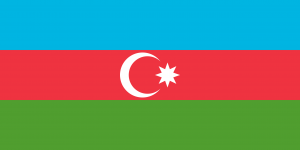Difference between revisions of "Language/North-azerbaijani/Grammar/Conditional-Mood"
m (Quick edit) |
m (Quick edit) |
||
| Line 7: | Line 7: | ||
__TOC__ | __TOC__ | ||
<span link>Don't hesitate to look into these other pages after completing this lesson: [[Language/North-azerbaijani/Grammar/Future-Tense|Future Tense]], [[Language/North-azerbaijani/Grammar/0-to-A1-Course|0 to A1 Course]], [[Language/North-azerbaijani/Grammar/Future-tense-verbs|Future tense verbs]] & [[Language/North-azerbaijani/Grammar/Asking-Questions|Asking Questions]].</span> | |||
== Formation of the Conditional Mood == | == Formation of the Conditional Mood == | ||
| Line 35: | Line 37: | ||
<hr>If you have any questions, please ask them in the comments section below.<br>Feel free to edit this wiki page if you think it can be improved. 😎 | <hr>If you have any questions, please ask them in the comments section below.<br>Feel free to edit this wiki page if you think it can be improved. 😎 | ||
==Other Lessons== | |||
== | |||
* [[Language/North-azerbaijani/Grammar/Questions|Questions]] | * [[Language/North-azerbaijani/Grammar/Questions|Questions]] | ||
* [[Language/North-azerbaijani/Grammar/Plurals|Plurals]] | * [[Language/North-azerbaijani/Grammar/Plurals|Plurals]] | ||
| Line 49: | Line 49: | ||
{{North-azerbaijani-Page-Bottom}} | {{North-azerbaijani-Page-Bottom}} | ||
<span links></span> | |||
Latest revision as of 20:57, 27 March 2023
Hi North Azerbaijani learners! 😊
In today's lesson, we will be discussing the conditional mood in North Azerbaijani. The conditional mood is used to express a hypothetical situation or an event that could happen in the future. It is also used to express wishes and polite requests.
Don't hesitate to look into these other pages after completing this lesson: Future Tense, 0 to A1 Course, Future tense verbs & Asking Questions.
Formation of the Conditional Mood[edit | edit source]
The conditional mood is formed by adding the suffix -sə to the verb stem. For example, the verb "yazmaq" (to write) becomes "yazsə" in the conditional mood.
Irregular Verbs[edit | edit source]
Some verbs have irregular forms in the conditional mood. Here are some examples:
- olmaq (to be): olsə
- gedən (to go): gəlsə
- görmək (to see): görəsə
Negative Form[edit | edit source]
The negative form of the conditional mood is formed by adding the suffix -məsə to the verb stem. For example, the verb "yazmaq" (to write) becomes "yazməsə" in the negative form of the conditional mood.
Usage[edit | edit source]
The conditional mood is used to express a hypothetical situation or an event that could happen in the future. It is also used to express wishes and polite requests.
For example:
- Mənim üçün kitab yazsə, mən onu çox sevirəm. (If you wrote a book for me, I would love it.)
- Sənin üçün gəlməsə, mən çox xoş olardım. (If you came for me, I would be very happy.)
- Sən görməsən, mən çox üzülürəm. (If you don't see it, I would be very sad.)
If you have any questions, please ask them in the comments section below.
Feel free to edit this wiki page if you think it can be improved. 😎
